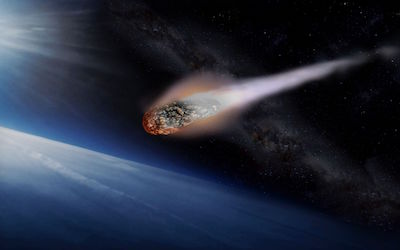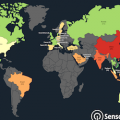PTE考生目前最大的问题之一就是练习题缺乏。除了有限的基本官方书(PLUS,Testbuilder, OG)之外,就没有题了。很多英语基础不是很扎实的同学很难找到练习材料。墨尔本文波雅思PTE培训学校专门为墨尔本,悉尼PTE考生准备了适合PTE听力阅读练习的科学60秒。各位PTE同学可以练习PTE听力中的summarise spoken text和PTE口语中的retell lecture,PTE听力口语-科学60秒-Frosty Moss练习记笔记技巧和复述。废话少说,下面开始:
How Asteroid 1950 DA Keeps It Together
听力内容:
60秒科学节目(SSS)是科学美国人网站的一套广播栏目,英文名称:Scientific American – 60 Second Science,节目内容以科学报道为主,节目仅一分钟的时间,主要对当今的科学技术新发展作以简明、通俗的介绍,对于科学的发展如何影响人们的生活环境、健康状况及科学技术,提供了大量简明易懂的阐释。
From the depths of space, an asteroid hurtles toward Earth. [Well, our general vicinity.] But this is no ordinary hunk of galactic debris. Because the body of this asteroid seems to defy gravity. It’s bound by forces never observed on this scale in space.
That’s not the plot of a new summer blockbuster. It’s the result of a study in the journal Nature. [Ben Rozitis, Eric MacLennan and Joshua P. Emery: Cohesive forces prevent the rotational breakup of rubble-pile asteroid (29075) 1950 DA]
The asteroid in question is actually a kilometer-sized collection of rubble. In most cases, such space-faring pebble piles are held together by a combination of gravity and friction. But not so for our rocky interloper, dubbed °∞1950 DA.°± This asteroid is rotating so rapidly that its pieces should have flung apart long ago.
Now, by analyzing the 1950 DA’s temperature and density, researchers conclude that cohesive forces called van der Waals attractions must be keeping the pieces clustered. Van der Waals forces may sound mysterious, but they’re well known on the small scale for their weak influence within and between molecules.
Blasting the asteroid, Hollywood style, could overcome these forces. But that might leave us with hundreds of smaller killer space rocks to dodge. The good news is, the asteroid won’t be in our area until 2880. So we have some time to figure it out.
–Karen Hopkin





